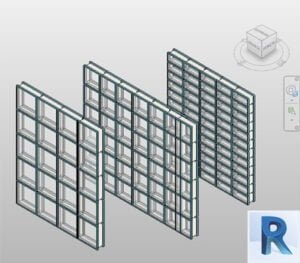Managing complex construction projects requires a solution that not only handles data but also ensures seamless collaboration between all stakeholders. This is where the Common Data Environment (CDE) becomes essential. By providing a centralized platform, CDEs allow project teams to securely access, share, and update information, improving decision-making and reducing errors.
What Is a Common Data Environment (CDE)?
A Common Data Environment (CDE) is a digital space where all project stakeholders can access and collaborate on project data in real time. This platform serves as the single source of truth, allowing team members to view, edit, and share information in a structured and organized way. CDEs are crucial in construction and engineering projects, as they improve communication, reduce duplicated work, and ensure that everyone is aligned with the latest project details.
A properly implemented CDE enhances not only collaboration but also security, making sure sensitive data is well protected from unauthorized access while minimizing communication gaps between teams.
Advantages of a CDE in Construction and Engineering
In industries like construction and engineering, data management is key to a project’s success. A CDE provides a centralized space to store and share information, fostering more efficient collaboration and reducing risks associated with errors or miscommunication.
Some of the standout benefits include improved accuracy, enhanced teamwork, and better transparency over project workflows. Additionally, CDEs support compliance with industry standards and regulations, which is particularly important in sectors like civil engineering and residential building projects.
Boosting Collaboration and Communication

The adoption of a CDE drastically changes how organizations collaborate. With a centralized location for data, project teams can access up-to-date information in real time, reducing the chance of misunderstandings and miscommunication.
In a CDE, team members share their expertise and knowledge on a common platform, allowing for more informed decision-making. This leads to a higher quality of work and reduces the likelihood of errors, as everyone is always working with the most current data.
Minimizing Errors and Inconsistencies
Managing data across various project stages is challenging, especially when information is scattered or poorly structured. A CDE addresses this by offering a unified data source, ensuring that every stakeholder works from the same set of up-to-date, accurate data.
In traditional project setups, multiple versions of documents can lead to inconsistencies and confusion. With a CDE, version control is automatic, allowing changes to be tracked and providing a historical log that helps resolve issues quickly and efficiently.
Increasing Efficiency and Productivity
By centralizing information in a CDE, project teams can work more efficiently and respond more quickly to changes and opportunities. This is especially critical in fast-paced projects, where speed and accuracy are key to success.
A CDE eliminates redundant work and time wasted searching for updated files, allowing teams to focus on tasks that add value. This increases productivity and ensures that projects stay on schedule, even when unforeseen challenges arise.
Securing Data and Ensuring Safety
Protecting data is paramount in large-scale projects, particularly those involving confidential or sensitive information. A CDE safeguards data through robust access control measures, ensuring that only authorized users have access to specific information.
This level of security is enhanced by detailed user permissions, which help reduce the risk of unauthorized access or data breaches. Additionally, the ability to track document changes and create historical records makes it easier to audit and verify information, further enhancing project security.
Real-World Examples of CDE Success
The implementation of CDEs has seen success across various industries. For instance, large infrastructure projects like the Crossrail Project in London used a CDE to manage vast amounts of design and construction data, enabling teams to collaborate efficiently across different locations and disciplines.
By providing a single source of truth, the project minimized delays and communication errors, leading to more streamlined processes and significant cost savings. Similar success stories are seen in healthcare construction projects, where the use of a CDE helps ensure compliance with strict regulatory standards while improving coordination between teams.
CDE’s Role in Compliance and Audits
In highly regulated industries such as healthcare and civil engineering, compliance is non-negotiable. A CDE ensures that every document, model, and piece of data adheres to industry standards and is readily available for auditing purposes.
This ability to track changes, document approvals, and maintain a clear audit trail is invaluable, especially when projects undergo inspection or review by regulatory bodies. It not only safeguards the project’s integrity but also saves time when dealing with compliance issues.
Free Revit families now on Bimshares.com






